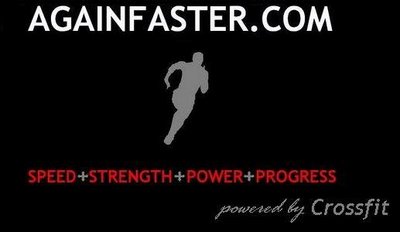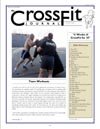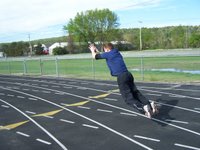Exercising Caution

As a trainer, I have a mandate. I’m charged with increasing my clients’ speed, strength, and power, and with those qualities, their overall fitness.
I’m also charged with keeping my clients injury-free. An athlete who is unable to run, jump, pull, push, and throw is not going to make any gains. I always err on the side of caution in this respect. If a client reports persistent pain beyond the level of simple discomfort for any movement, we don’t do that movement.
I also refuse to expose my athletes to any movement that I deem unsafe. There are very few exercises that fall into this category. Most exercises that conventional wisdom has declared “unsafe” are absolutely necessary for elite athletic development—the squat and the deadlift come to mind. These exercises are perfectly safe with proper spinal alignment and range-of-motion. Without these sound mechanics, they can result in injury.
The weighted good morning is one of the few exercises my athletes don’t perform. While this movement is perfectly suitable for veterans of posterior chain work, it exposes novice and intermediate athletes to an unacceptable risk of injury. Further, a viable substitute exists that reduces this risk substantially.
In the weighted good morning, the athlete holds a barbell across the trapeziums, much like the starting position of the back squat. With a slight bend in the knees, he then leans forward at the waist while pushing the hips back, keeping the chest up and the shoulders retracted, until reaching parallel. Upon completion, he returns to the upright position.
Like the squat and the deadlift, performing this movement safely requires good spinal alignment. The chest is “up”, the shoulders are retracted, and the lower back is arched.
For novice athletes, maintaining this spinal alignment is a challenge. This group typically presents poor hamstring flexibility, making it nearly impossible for them to retain an arched lower back throughout the prerequisite range of motion during the good morning. Without this arch, a tremendous shearing force is placed on the spine. The lack of proper spinal alignment is further exacerbated by the placement of the resistance.
Using classical mechanics, the dangerous nature of the good morning due to the placement of resistance becomes blindingly obvious. The barbell is across the shoulders, a full torso-length from the hips. In essence we have a lever system, where the spine serves as the lever and the hips serve as the fulcrum.

The further the fulcrum is from the load, the greater the force that must be applied to the lever to move the load. In this case, the fulcrum is as far from the load as possible, and the athlete must apply a great deal of force to the spine in order to return to standing. The chance of the back rounding and spinal alignment failing is huge.

The majority of the benefit of the good morning lies in the return to standing. The athlete recruits the hamstrings, the glutes, and the erectors to move the resistance through a 90-degree arc, ostensibly building strength and power in that muscle group. Make no mistake—this is a worthwhile goal. The ham/glute/erector complex is the engine that drives all athletic movement. It must be developed thoroughly in order to achieve maximum performance.
There is an alternative to the good morning that creates the same speed and power benefits. The Romanian Deadlift (RDL) recruits the same muscles as the good morning while allowing the novice athlete to achieve proper spinal alignment, despite a lack of hamstring flexibility. Most importantly, the load is placed very close to the hips, reducing the load on the spine, and therefore reducing the risk of rounding.

The RDL is often lumped into the mix of dangerous exercises. Like anything else, it can be devastating without proper mechanics. The knees are slightly bent, the chest is “up”, the shoulders are retracted, and the lower back is arched. The barbell is against the shins, placing the load close to the hips and within the base of support. Keeping the knees bent and the spine in proper position, the athlete moves through a 90-degree arc to vertical.
There are several similarities between the RDL and the good morning. The glute/ham/erector complex is activated in each instance, and proper performance requires good spinal alignment. The range-of-motion is nearly identical. The difference lies in the placement of the load in relation to the hips and the base of support. When we take these factors into consideration, the proper choice of exercise becomes obvious.
With equal efficacy, and a lower risk of injury, the RDL is superior to the good morning for targeted posterior chain development.
Go faster!
Pictures courtesy of the Maryland Spine Center, Bullz-eye.com, and Purekracht.nl. The crappy lever illustration is all mine.

As a trainer, I have a mandate. I’m charged with increasing my clients’ speed, strength, and power, and with those qualities, their overall fitness.
I’m also charged with keeping my clients injury-free. An athlete who is unable to run, jump, pull, push, and throw is not going to make any gains. I always err on the side of caution in this respect. If a client reports persistent pain beyond the level of simple discomfort for any movement, we don’t do that movement.
I also refuse to expose my athletes to any movement that I deem unsafe. There are very few exercises that fall into this category. Most exercises that conventional wisdom has declared “unsafe” are absolutely necessary for elite athletic development—the squat and the deadlift come to mind. These exercises are perfectly safe with proper spinal alignment and range-of-motion. Without these sound mechanics, they can result in injury.
The weighted good morning is one of the few exercises my athletes don’t perform. While this movement is perfectly suitable for veterans of posterior chain work, it exposes novice and intermediate athletes to an unacceptable risk of injury. Further, a viable substitute exists that reduces this risk substantially.
In the weighted good morning, the athlete holds a barbell across the trapeziums, much like the starting position of the back squat. With a slight bend in the knees, he then leans forward at the waist while pushing the hips back, keeping the chest up and the shoulders retracted, until reaching parallel. Upon completion, he returns to the upright position.
Like the squat and the deadlift, performing this movement safely requires good spinal alignment. The chest is “up”, the shoulders are retracted, and the lower back is arched.
For novice athletes, maintaining this spinal alignment is a challenge. This group typically presents poor hamstring flexibility, making it nearly impossible for them to retain an arched lower back throughout the prerequisite range of motion during the good morning. Without this arch, a tremendous shearing force is placed on the spine. The lack of proper spinal alignment is further exacerbated by the placement of the resistance.
Using classical mechanics, the dangerous nature of the good morning due to the placement of resistance becomes blindingly obvious. The barbell is across the shoulders, a full torso-length from the hips. In essence we have a lever system, where the spine serves as the lever and the hips serve as the fulcrum.

The further the fulcrum is from the load, the greater the force that must be applied to the lever to move the load. In this case, the fulcrum is as far from the load as possible, and the athlete must apply a great deal of force to the spine in order to return to standing. The chance of the back rounding and spinal alignment failing is huge.

The majority of the benefit of the good morning lies in the return to standing. The athlete recruits the hamstrings, the glutes, and the erectors to move the resistance through a 90-degree arc, ostensibly building strength and power in that muscle group. Make no mistake—this is a worthwhile goal. The ham/glute/erector complex is the engine that drives all athletic movement. It must be developed thoroughly in order to achieve maximum performance.
There is an alternative to the good morning that creates the same speed and power benefits. The Romanian Deadlift (RDL) recruits the same muscles as the good morning while allowing the novice athlete to achieve proper spinal alignment, despite a lack of hamstring flexibility. Most importantly, the load is placed very close to the hips, reducing the load on the spine, and therefore reducing the risk of rounding.

The RDL is often lumped into the mix of dangerous exercises. Like anything else, it can be devastating without proper mechanics. The knees are slightly bent, the chest is “up”, the shoulders are retracted, and the lower back is arched. The barbell is against the shins, placing the load close to the hips and within the base of support. Keeping the knees bent and the spine in proper position, the athlete moves through a 90-degree arc to vertical.
There are several similarities between the RDL and the good morning. The glute/ham/erector complex is activated in each instance, and proper performance requires good spinal alignment. The range-of-motion is nearly identical. The difference lies in the placement of the load in relation to the hips and the base of support. When we take these factors into consideration, the proper choice of exercise becomes obvious.
With equal efficacy, and a lower risk of injury, the RDL is superior to the good morning for targeted posterior chain development.
Go faster!
Pictures courtesy of the Maryland Spine Center, Bullz-eye.com, and Purekracht.nl. The crappy lever illustration is all mine.




















1 Comments:
I had thought that a big safety advantage of the RDL over the goodmorning was that in an RDL you can dump the bar at any time, a tricky proposition in goodmornings. Thanks for the interesting article -Toby
Post a Comment
<< Home